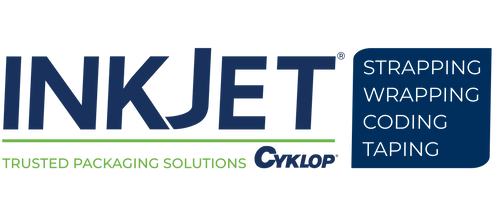Which Industrial Inkjet Printhead Do You Need?
Whether you’re using a production line continuous inkjet printer, a handheld thermal inkjet printer, or a high-resolution, large character case coder, printheads play a key role in ensuring that applied codes come out clean, legible, and machine-scannable.
As their name suggests, printheads are the components through which printers expel ink onto substrates to create the desired image, code, or text message. With a well-maintained printhead, printers enable line operators to mark their products with the fully traceable codes required by both industry coding standards and government regulations.
Of course, not all printheads are right for the same applications. For instance, the hardware one would use to mark thousands of glass bottles a day isn’t necessarily ideal for coding shrink-wrapped product packs or rubber goods. Consequently, if one doesn’t perform proper printhead research, they can fall short of their production goals or create unreadable codes.
If you’re wondering which industrial inkjet printhead—whether piezoelectric, thermal, or valve jet—will best meet your needs, follow this guide to discover which option may be right for you.
Piezoelectric Printheads
Piezoelectric technology was first introduced to the inkjet printing world in the early 1970s. The term “piezoelectricity” stems from two Greek words: “piezein”, meaning “press” or “squeeze”, and ēlektron which means “amber”—the crystal ancient Greeks used to discover static electricity.
Piezoelectric printheads create ink markings by creating piezoelectric effects. Within every piezoelectric printhead is a piezoelectric material, like a crystal or ceramic fixture. When this material is exposed to electricity, it expands. Once the electric current is removed, the material contracts back to its normal size.
Printers equipped with piezoelectric printheads use this effect to improve ink oscillation and propulsion. The printer feeds an ink stream toward the printhead then the vibrations of the piezoelectric material cause the stream to oscillate into distinct droplets. As the material expands, it also further pressurizes the ink droplets, allowing the printer to propel them toward the substrate through the nozzle with speed and accuracy. Once the material contracts, it pulls more droplets into the nozzle to repeat the process.
Look below to see the pros and cons of piezoelectric printheads:
|
|
|
|
|
|
|
|
|
|
|
|
|
|
|
|
|
Thermal Inkjet Printheads
Thermal inkjet printheads greatly differ from piezoelectric printheads in several ways. For one, thermal inkjet printheads aren’t actually printer parts. Instead, they are built into the cartridges used by TIJ printers. When one replaces a TIJ cartridge, they are effectively changing the printhead as well. This eliminates the need for printhead cleaning and enables what many call “zero-maintenance operation”.
The other major difference between thermal inkjet printheads and piezoelectric printheads is the method in which they pressurize ink. While piezoelectric printheads use electric voltage to oscillate and propel ink droplets, thermal inkjet printheads use heat.
Within every TIJ cartridge is a series of electronic resistors that heat the liquid ink inside the cartridge’s ink chamber. Once the ink reaches a temperature of 644°F, a bubble forms, and it’s the pressure from the bubble that propels the ink from its chamber, through the printhead, and out to the nozzle.
The ink droplets then break away from the nozzle to be propelled toward the substrate. After the ink droplets leave the nozzle, the bubble collapses, thus creating a vacuum effect that allows the process to repeat itself.
Look below to see the pros and cons of thermal inkjet printheads:
|
|
|
|
|
|
|
|
|
|
|
|
|
|
|
|
|
Valve Jet Printheads
Valve jet printers are built with internal jets that are used to pressurize and propel ink droplets toward substrates. These jets are controlled by valves that alternatively open and close to create varying levels of pressure and oscillate an ink stream into different droplet sizes. Once a substrate passes by the valve jet printhead, the pressurized droplets are expelled toward the material to create the text or code.
This operating principle allows valve jet printers to create continuous ink flows, which is ideal for industrial coding applications that require prolonged periods of uptime. Additionally, valve jet printer operating costs are relatively low, making them a great fit for variable data printing on porous and non-porous substrates.
Look below to see the pros and cons of valve jet printheads:
|
|
|
|
|
|
|
|
|
|
|
|
|
|
|
|
|
|
|
|
Have More Questions About Industrial Inkjet Printheads? InkJet, Inc. Has Answers
Today’s industrial printing market is filled with many types of printheads, and each one is built to excel at specific applications. If you’re unsure of which one is right for you, InkJet, Inc. is here to help. Reach out to our team today to find out what printhead technology will work best for you.
To learn more about industrial inkjet printheads contact us online today or call 1(800) 280-3245.



